After thoroughly enjoying my stroll around Kōfuku-ji, I head towards Tōdai-ji. When you think of Nara, the Great Buddha of Tōdai-ji is a must-see, so as expected, there are many tourists, and it’s quite crowded. It seems there are a lot of visitors from overseas as well. As I’ve mentioned many times before, I’m not fond of crowds, so it’s a bit of a downside for me.
However, despite all that, I really wanted to see the Great Buddha of Nara with my own eyes. Thoughts like, “How big is it really?” and “Will it be as impressive up close?” run through my mind.
Of course, the charm of Tōdai-ji is not just the Great Buddha, so I’d like to share more about the temple and its surroundings as well.
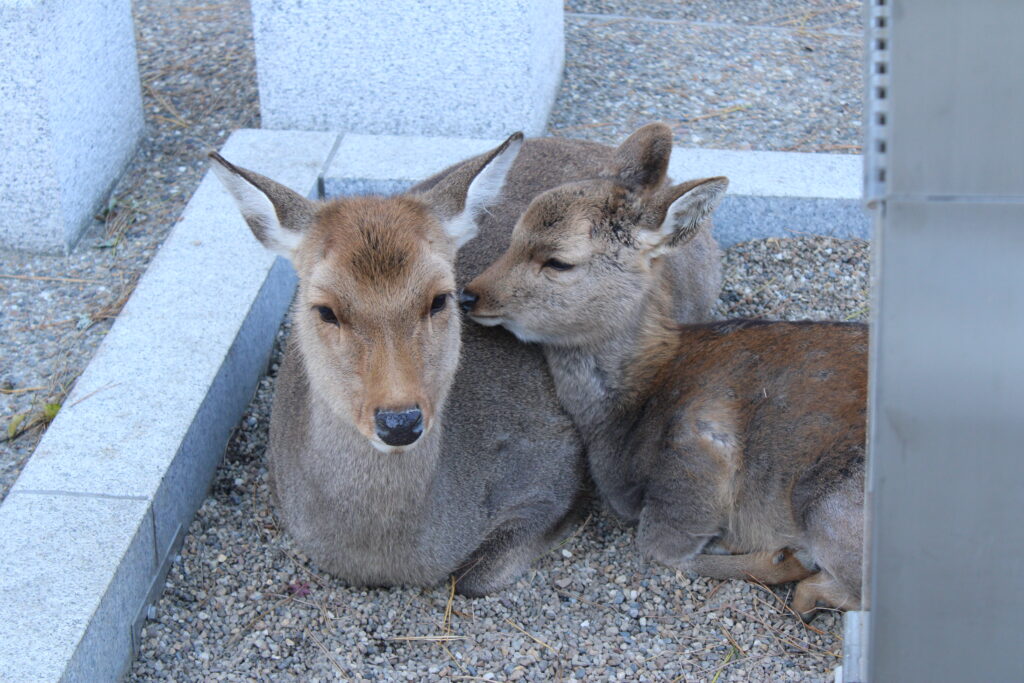
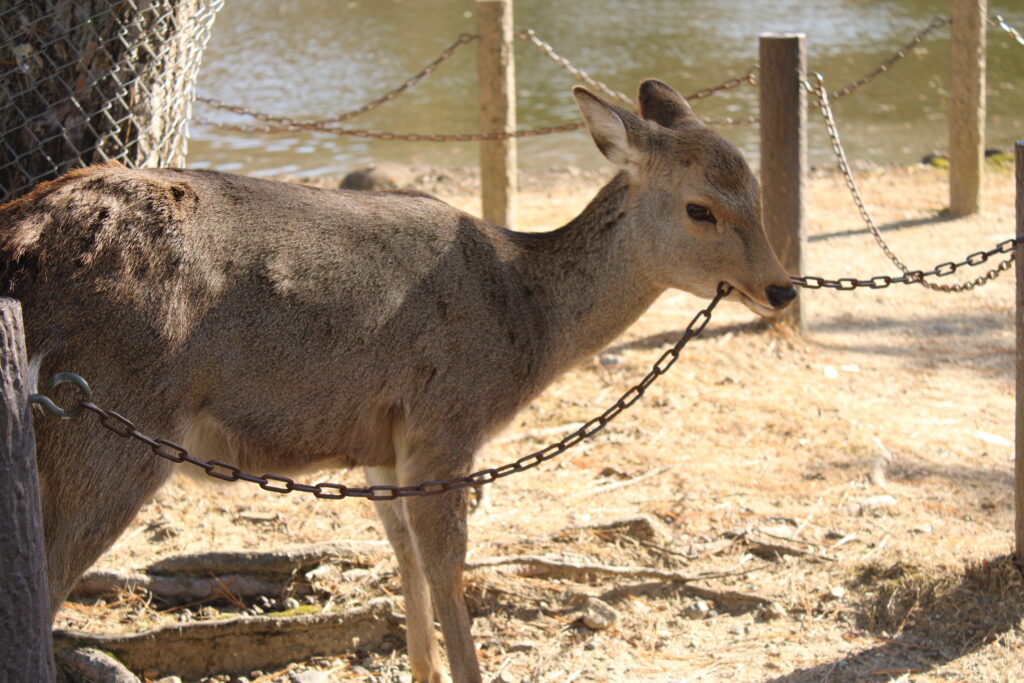
What is Tōdai-ji?
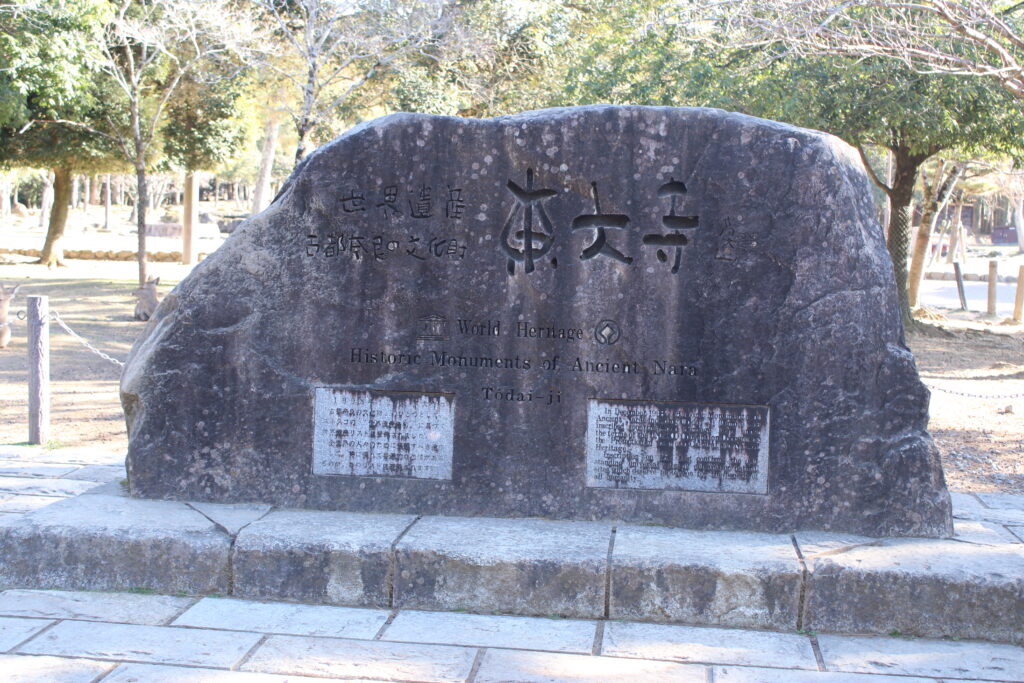
Tōdai-ji is the head temple of the Kegon sect and is registered as a World Heritage site.
It began in 728, when Emperor Shōmu established Kinshōzan-ji. In 741, when the imperial decree to establish the national temples and nuns’ temples was issued, it became known as Yamato Kinkoumyō-ji. After the Great Buddha was consecrated in 752, the temple complex was further developed, and since it was the great temple located to the east of Heijō-kyō, it came to be called Tōdai-ji.
The temple temporarily declined due to the burning of Nara in 1180 and the fire in 1567, but during the Edo period, the Great Buddha and the Great Buddha Hall were restored, and it stands as it is today.
Exploring the Grounds
The grounds of Tōdai-ji are quite large, so I’ll highlight a few key points.
Nandaimon (Great South Gate) – Kamakura Period, National Treasure
This is the main gate of Tōdai-ji. The original gate built during the Tempyō era collapsed due to a typhoon during the Heian period. The current gate was reconstructed during the Kamakura period by the monk Chōgen, who played a major role in the restoration of Tōdai-ji. He incorporated the architectural style of the Song Dynasty from China, and it’s a valuable relic that evokes the grandeur of the original Great Buddha Hall, which no longer exists. The gate was completed in 1203, after its construction began in 1199, and it houses the famous Kongōrikishi (Nio) statues inside.
As you pass through the gate, you can see the giant Kongōrikishi statues, which are an impressive sight.
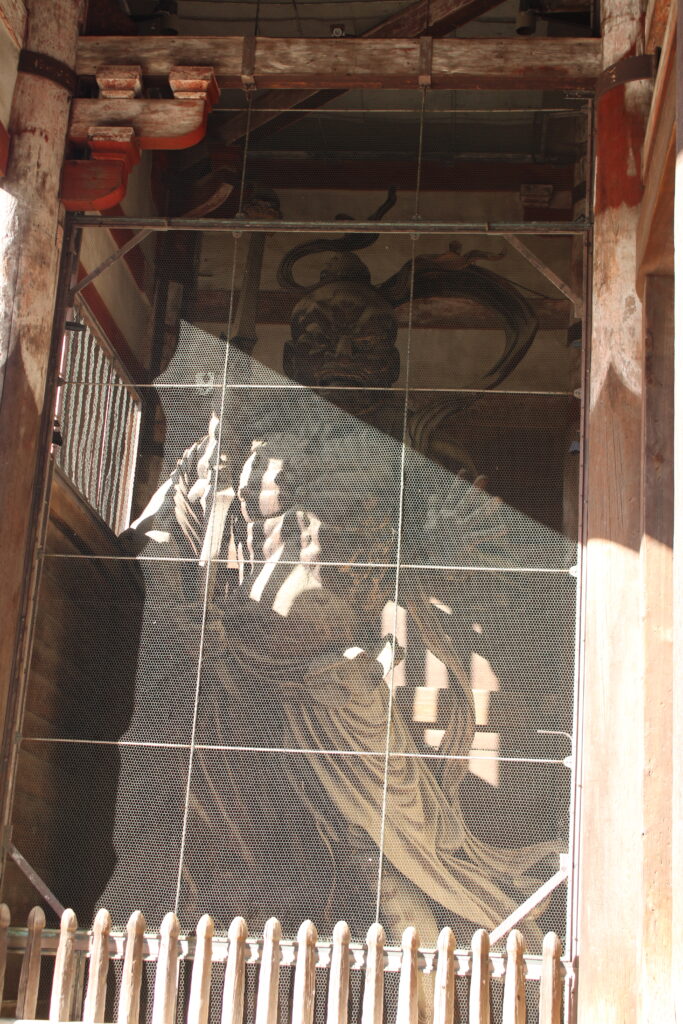
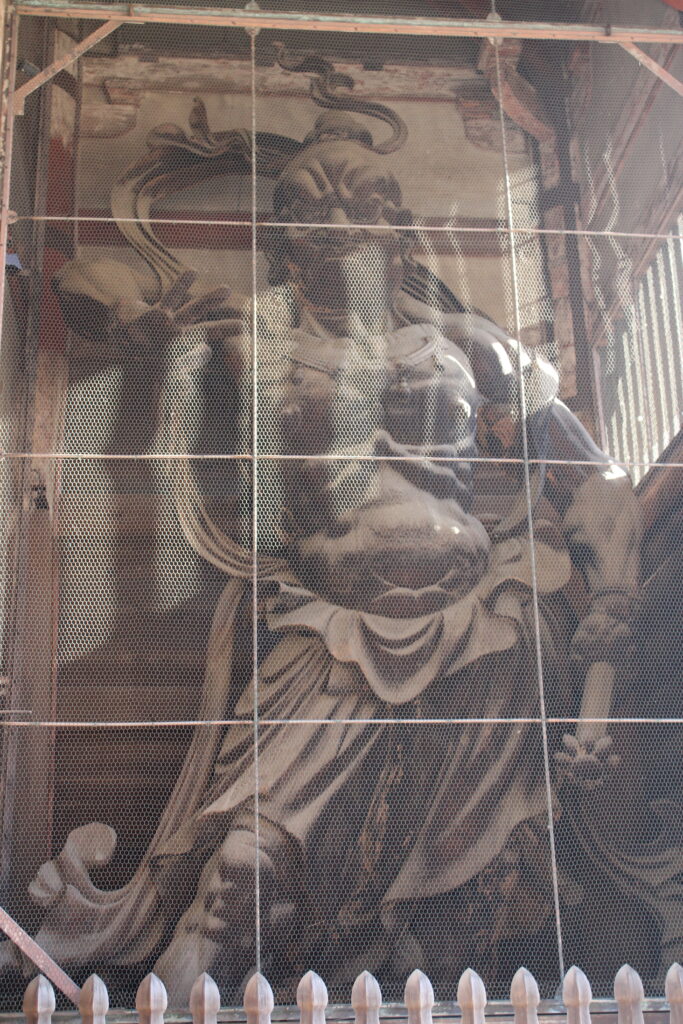
This is a massive statue created in the early Kamakura period in 1203 by renowned sculptors like Unkei and Kaikei, along with other artisans, in an astonishingly short span of just 69 days. Each statue stands just under 8.4 meters tall. Given that these statues were crafted by the genius sculptors Unkei and Kaikei, the sense of power and presence they exude is truly remarkable! We can imagine that these great artists, known as the masters of their time, perfectly synchronized their efforts to create such an awe-inspiring masterpiece.
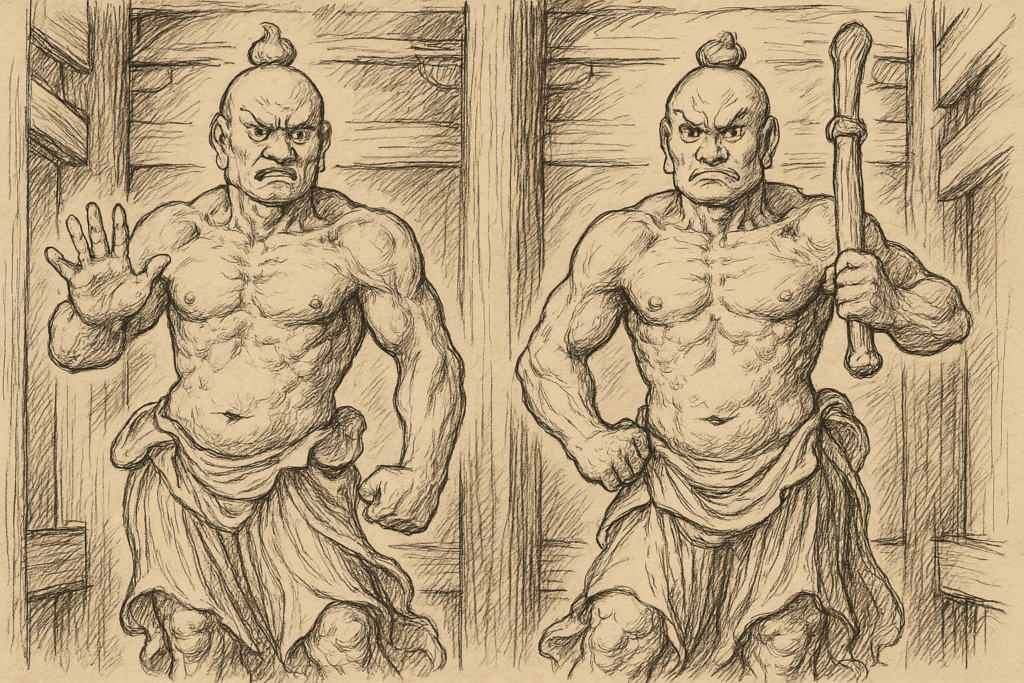
After the Nara fire of 1180, led by Taira no Shigehira, chōgen worked to restore Tōdai-ji with the help of the imperial court and Minamoto no Yoritomo. The Nandaimon was one of the final buildings to be constructed as part of this restoration project, and it is said that chōgen personally requested the creation of the Kongōrikishi statues to be placed within the gate.
Great Buddha Hall (Daibutsuden)
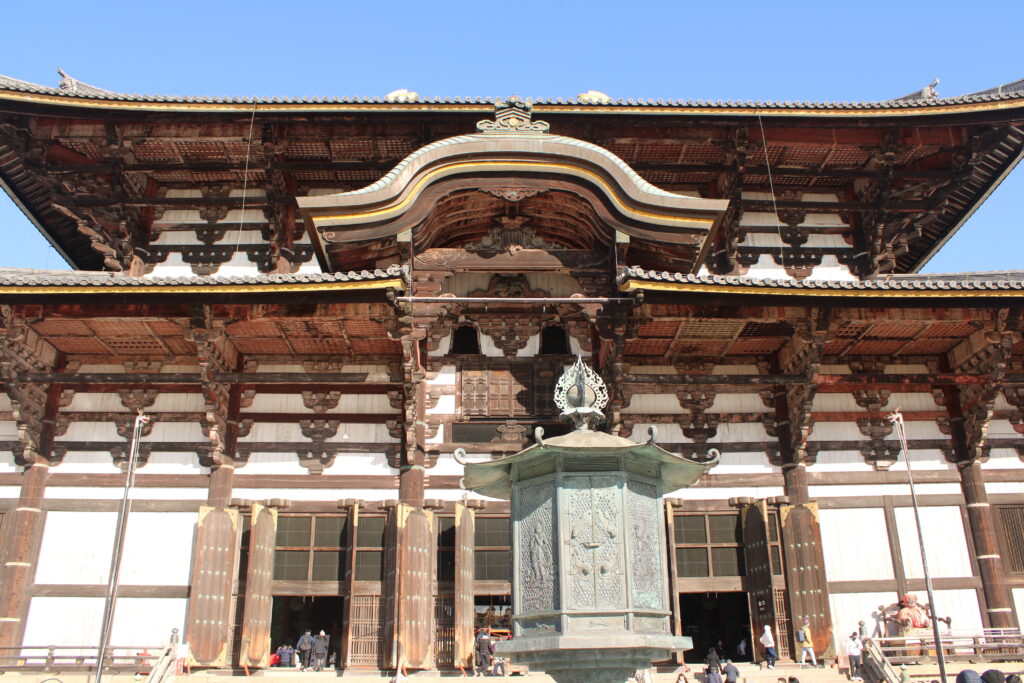
The Great Buddha Hall is the main hall of Tōdai-ji. Originally built during the Nara period, it was damaged twice by fire during the Jishō and Eiroku eras. The current structure was rebuilt during the Edo period by the monk Kōkei. When you see the Great Buddha Hall up close, it appears incredibly large, but it seems that the building has been reduced in size compared to its original construction. Nevertheless, the height and depth of the hall remain as they were during its creation, and it is still one of the largest wooden structures in the world.
Inside the Great Buddha Hall, you can see the Great Buddha of Nara. Its immense size is truly overwhelming, and it’s impossible not to be struck by its sheer scale.
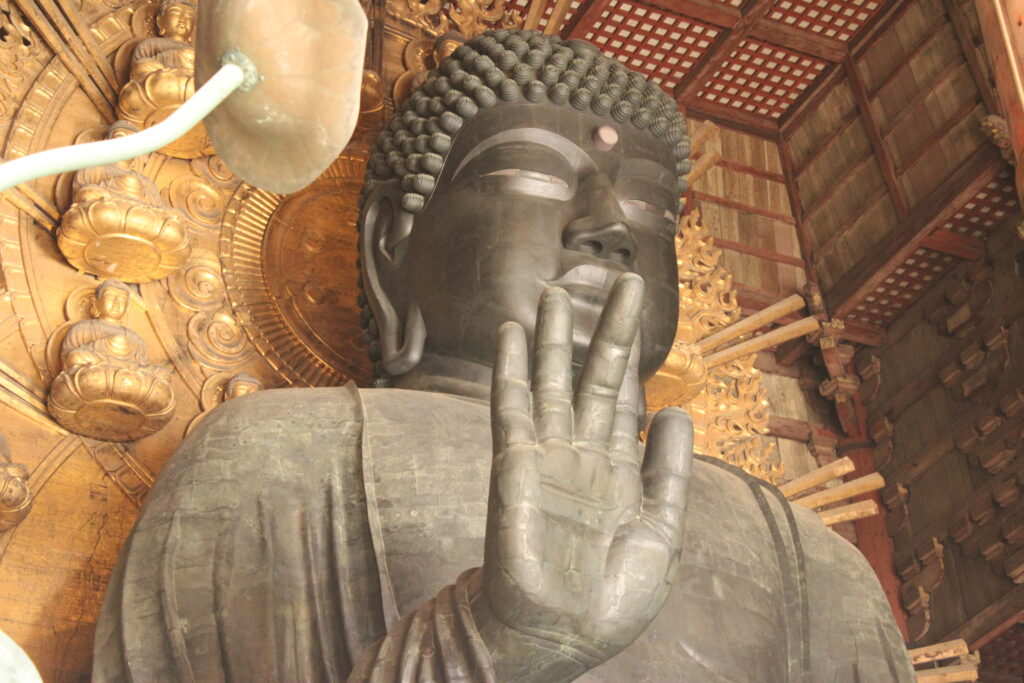
Let’s take a moment to explain a bit about the Great Buddha.
The Great Buddha is properly called Rushana Buddha or Vairochana Buddha, which means a Buddha who radiates the light of wisdom and compassion everywhere.
The historical Buddha, Siddhartha Gautama, was born in the city of Kapilavastu in India. At the age of 29, he renounced his royal life and embarked on a path of extreme asceticism. After six years of rigorous practice, he ultimately attained enlightenment under the Bodhi tree by the Nairanjana River. The Mahāparinirvāṇa Sūtra describes the moment when the Buddha transcended time and space to become a universal Buddha, illustrating the vast, correct, and infinite world of Buddha through various Bodhisattva practices.
According to this scripture, everything—birdsong, the color of flowers, the flow of water, the shape of clouds—is a manifestation of the teachings of Vairochana Buddha, who seeks to save all living beings. Around the base of the Great Buddha statue, there are lotus petal carvings depicting the Hōkekyo or “Avatamsaka Sutra,” which presents the “world of enlightenment.” This beautifully symbolizes the interconnectedness and expansiveness of all beings, suggesting that everything is enveloped by the radiant light of Vairochana Buddha.
I’d like to share some photos from various angles. Indeed, the scale of the Great Buddha in Nara is astonishing! In terms of size, it definitely overwhelms the Great Buddha in Kamakura.
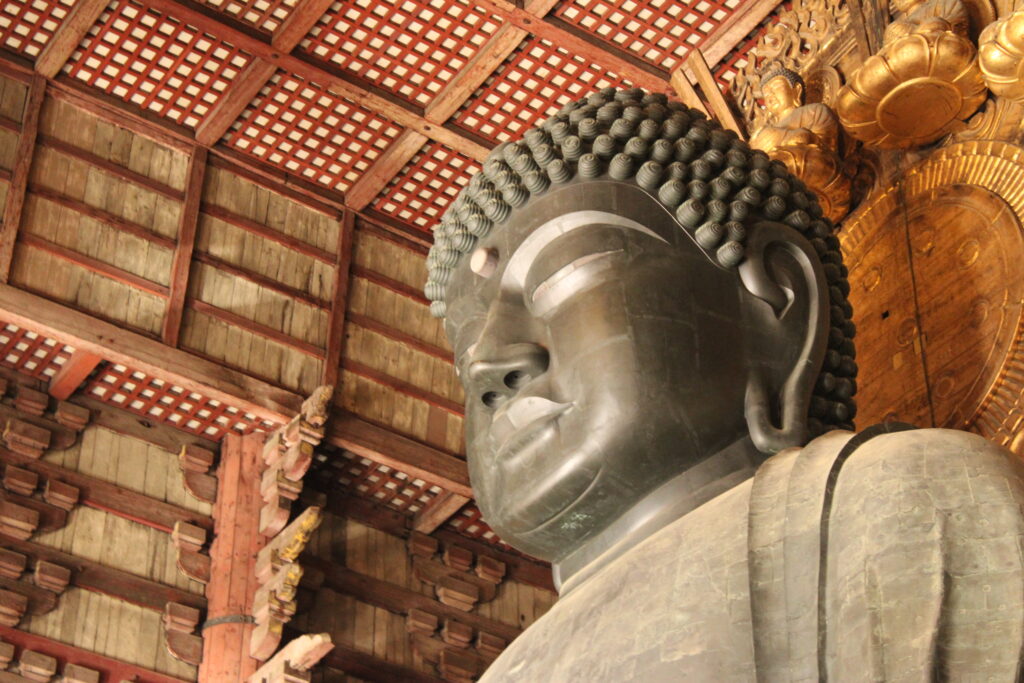
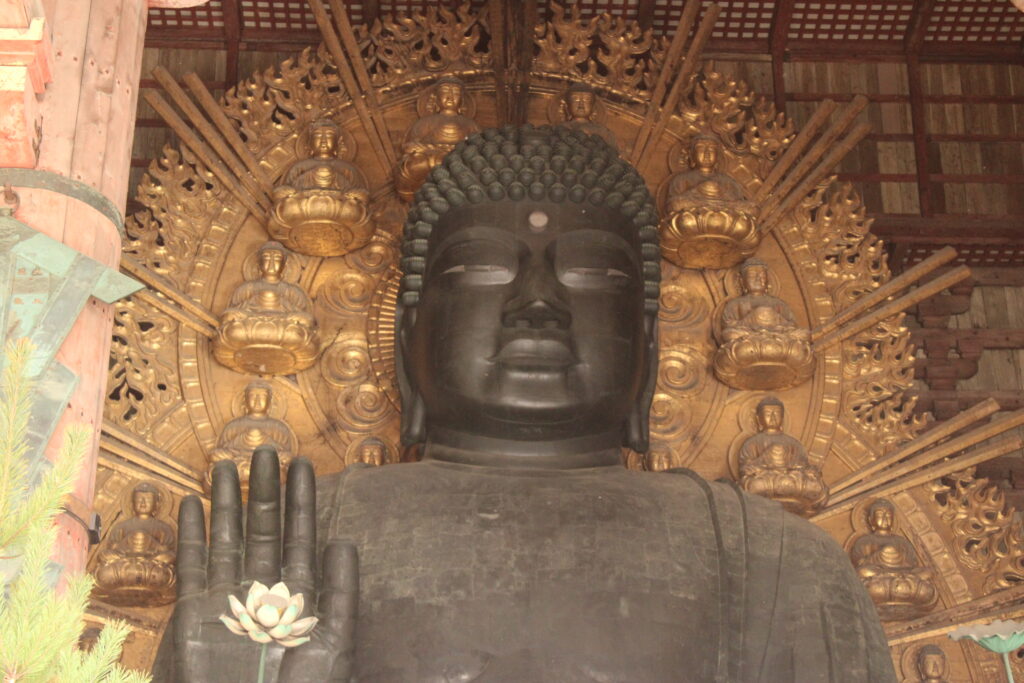
The interior of the Great Buddha Hall is designed so that visitors can walk all the way around the Great Buddha. In addition to the statue itself, there are many other points of interest within the hall. I’ll share some photos to showcase these highlights.

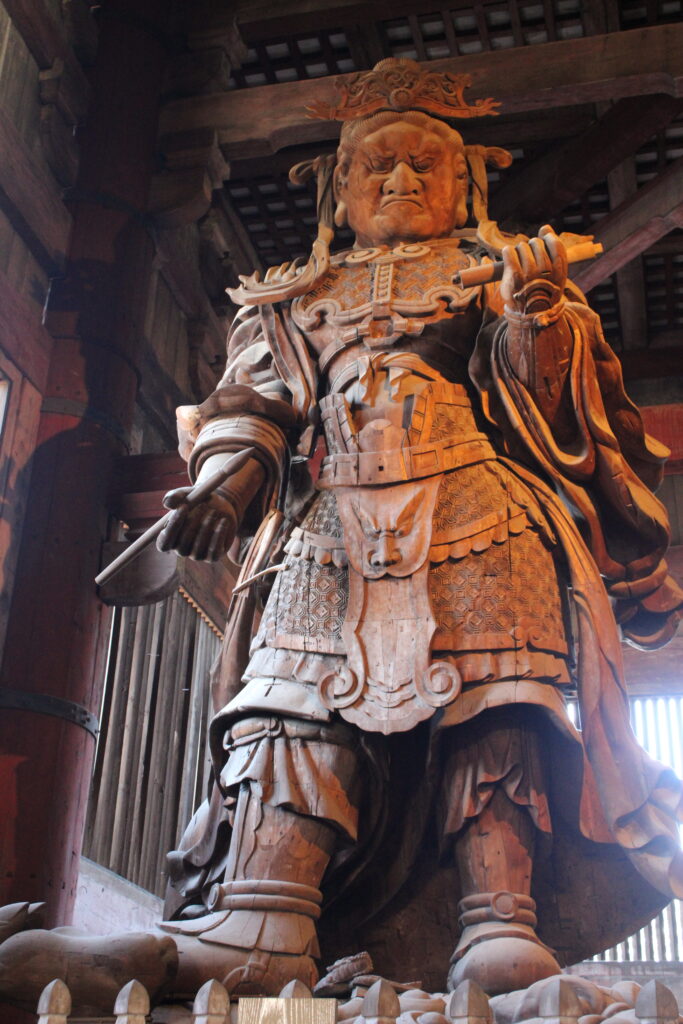
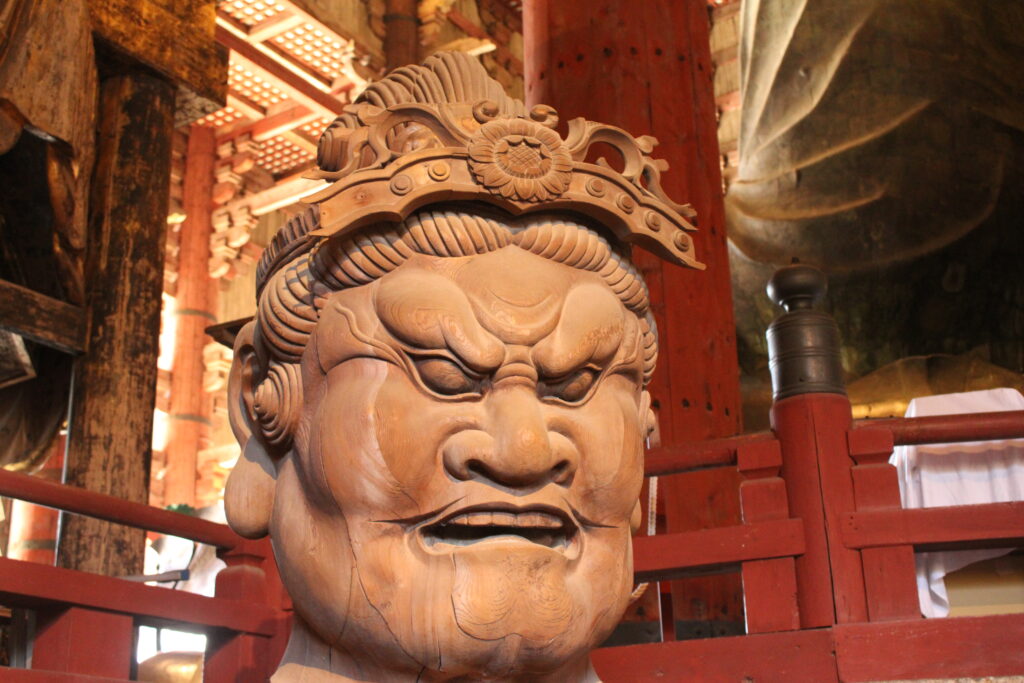
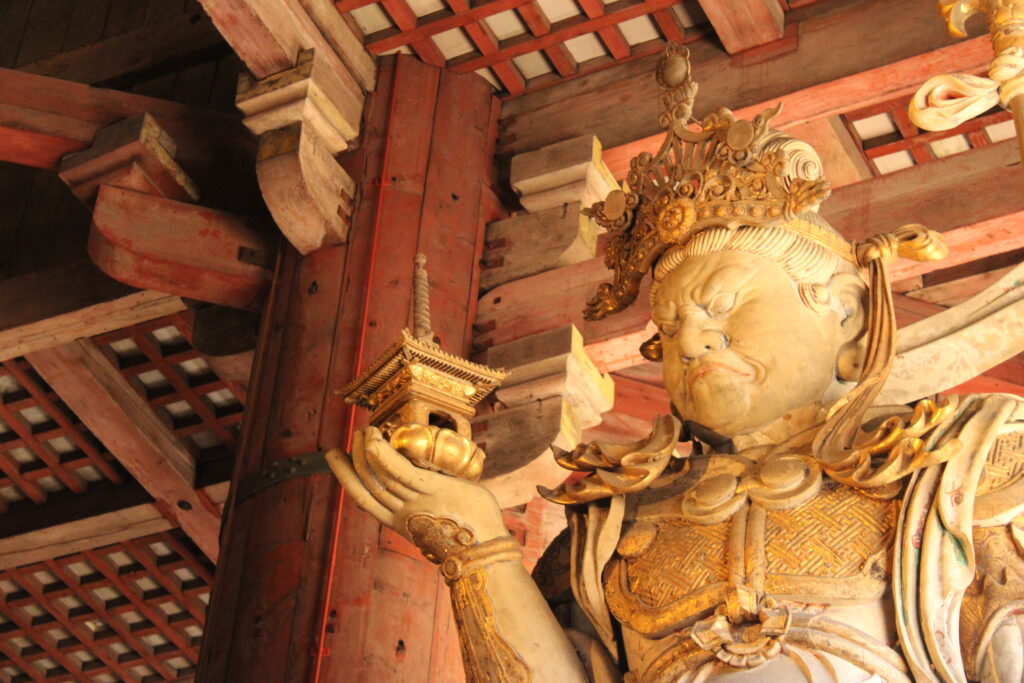
Bell Tower (Shōrō) – Kamakura Period, National Treasure
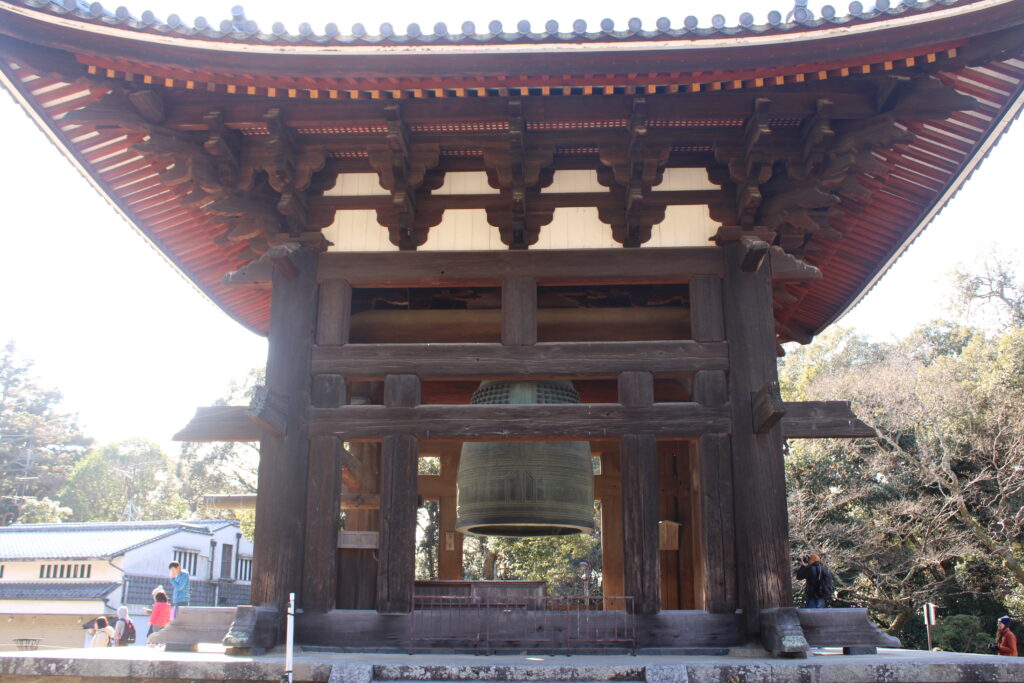
The bell tower (Shōrō) was rebuilt during the early Kamakura period by the Zen master Eisei, who succeeded Chōgen, the monk who played a crucial role in the restoration of Tōdai-ji. Eisei was appointed as the chief priest during the Jōgen era (1207–1211). The structure is a bold and imposing building that combines elements of both the Daibutsuyō (Great Buddha style) and Zen architectural style.
The massive bronze bell inside, weighing 26.3 tons, is a National Treasure and dates back to the original construction of Tōdai-ji. The bell’s sound is known for its exceptionally long resonance, earning it the nickname “Nara Taro.” It is also considered one of the three most famous bells in Japan.
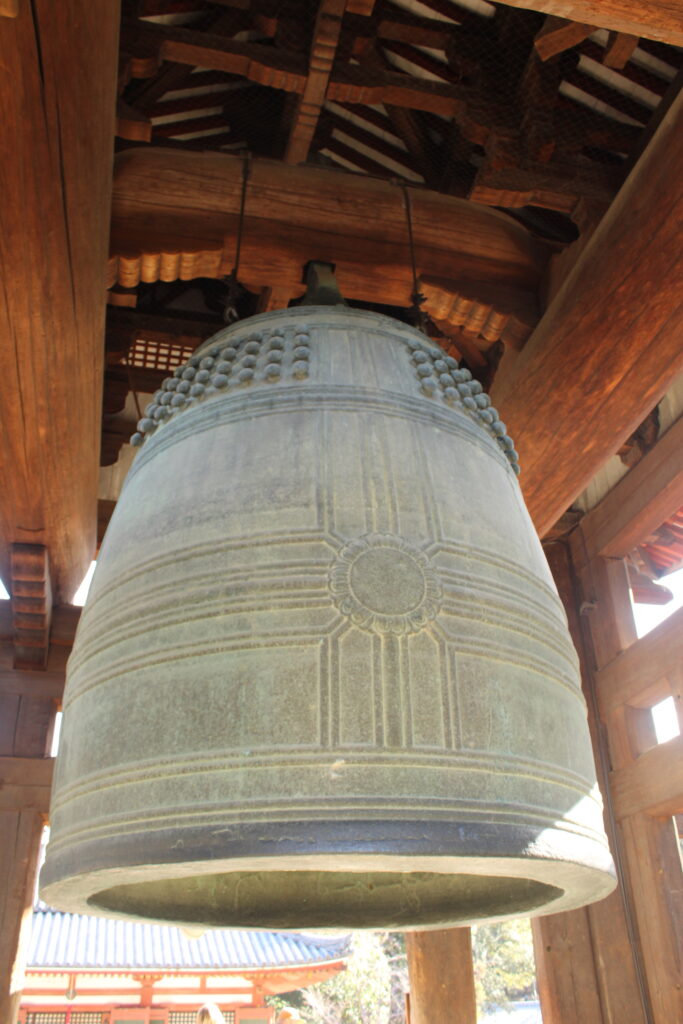
It’s amazing that the original bell from the creation of Tōdai-ji has been preserved! The craftsmanship is outstanding, so I took photos from various angles to capture its impressive details.
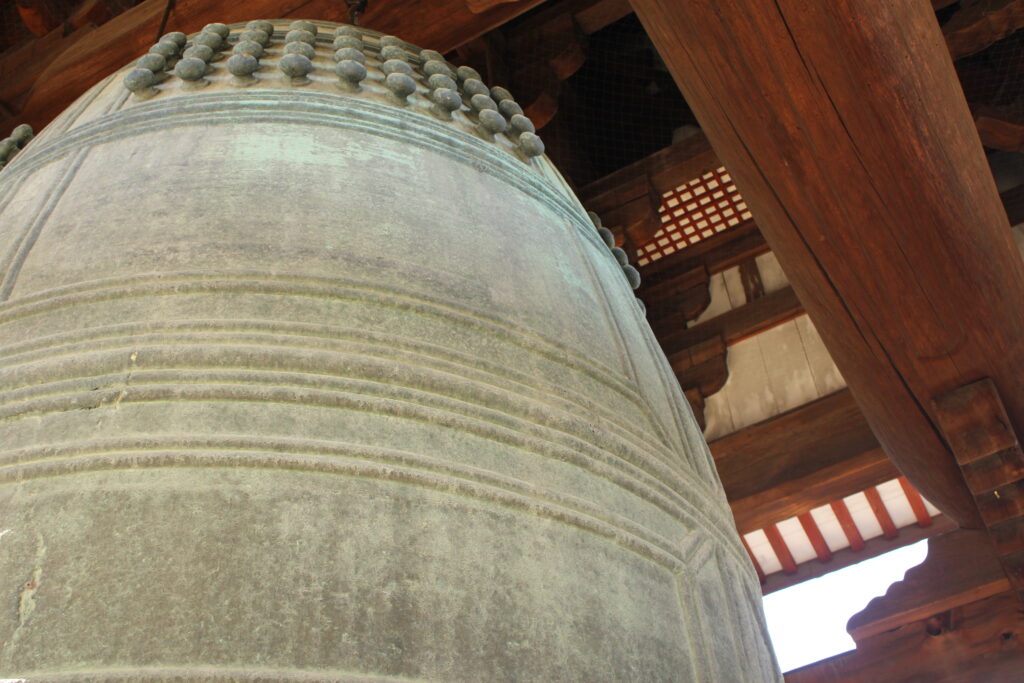
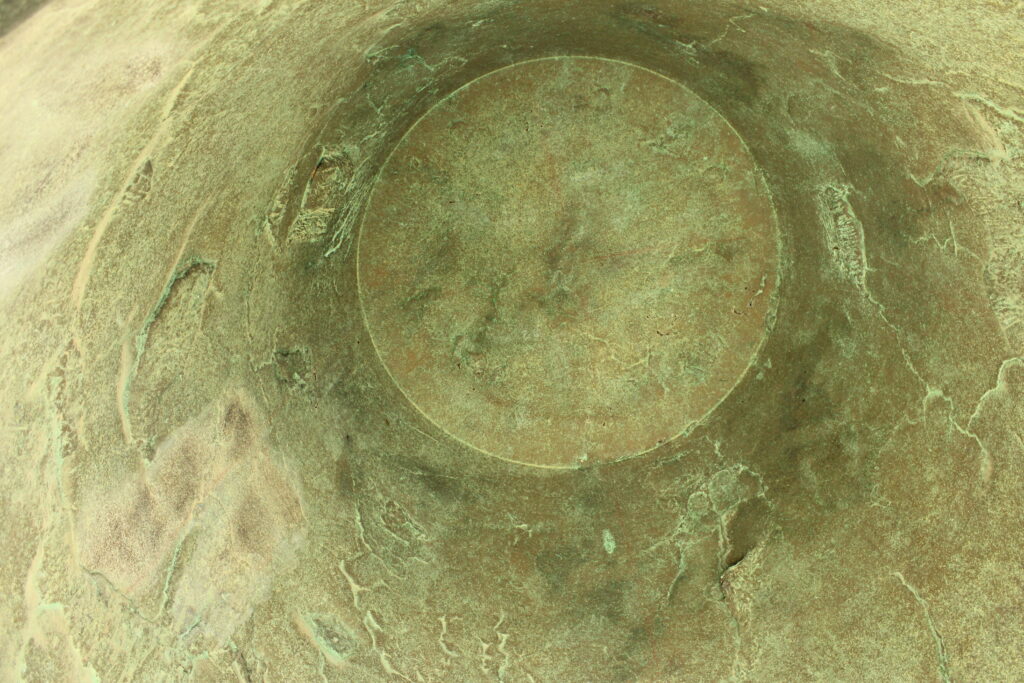
Nigatsu-dō (February Hall) – Edo Period, National Treasure
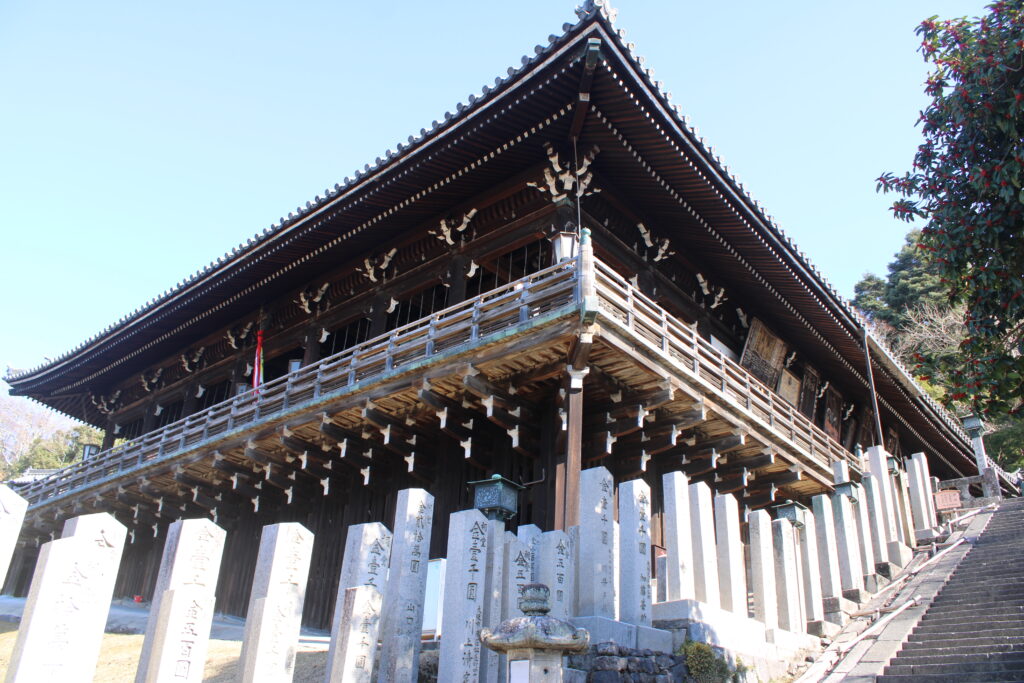
The name “Nigatsu-dō” comes from the fact that the Shuni-e (a Buddhist ritual) held at this hall takes place in the second month of the lunar calendar. It is traditionally said to have been founded by the great disciple of the monk Rōben, named Jitchū. However, in 1667, during the Shuni-e ceremony, a fire broke out inside the hall, destroying the structure. The current building was rebuilt two years later, in 1669.
Personally, I found the decorations (or details) of Nigatsu-dō to be quite stylish and retro in feel, so I paid special attention to them.
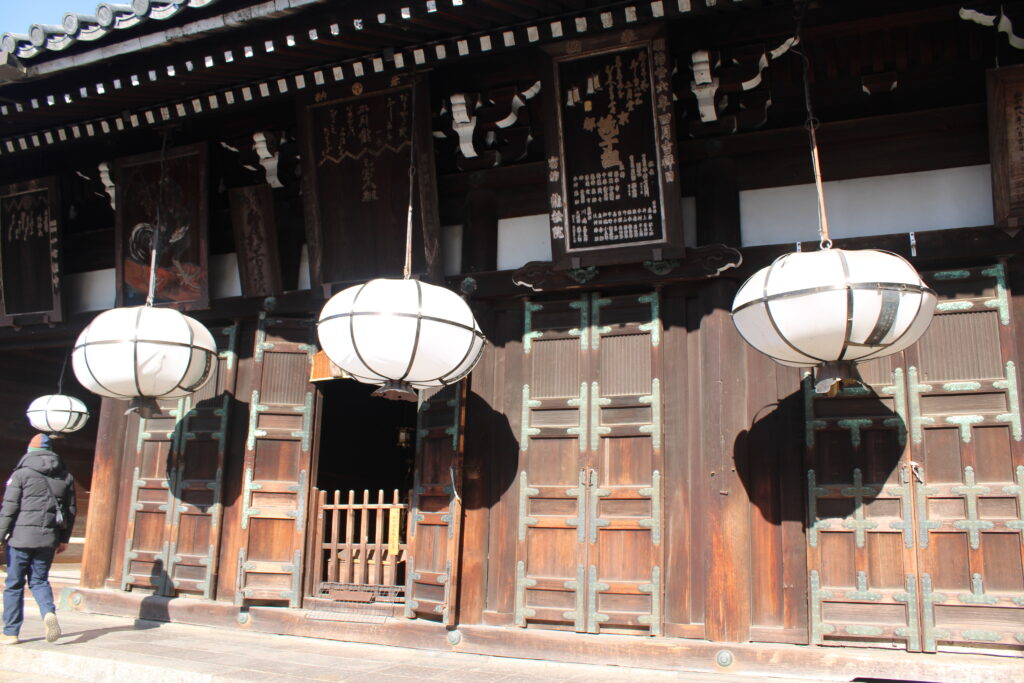
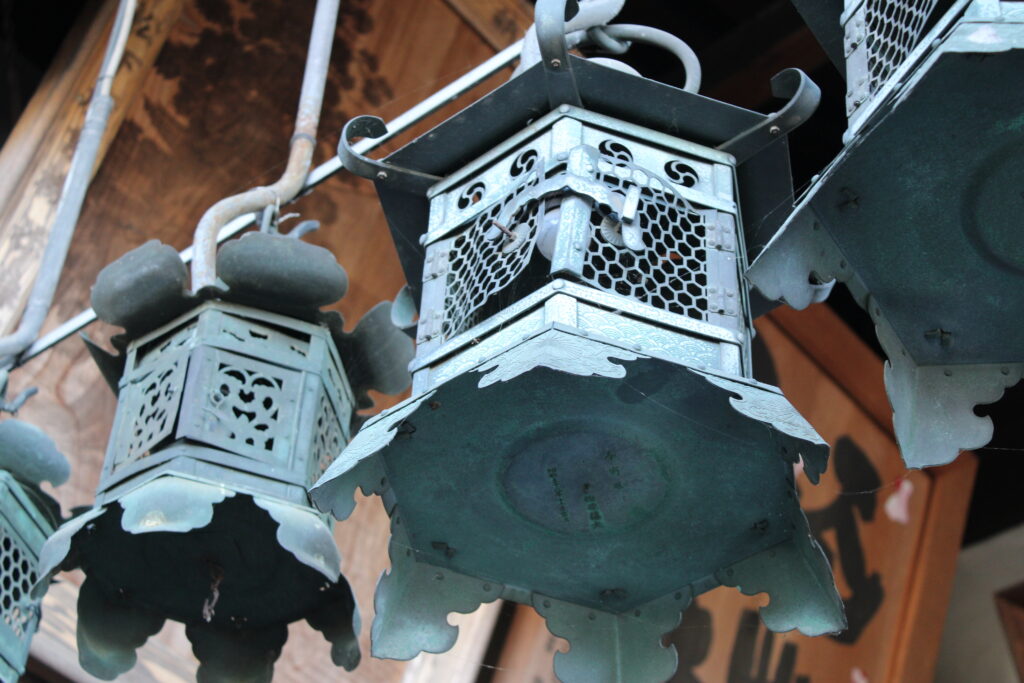
Another notable feature of Nigatsu-dō is its fantastic view. Since the hall is located on a slightly elevated spot, you can enjoy a beautiful panorama overlooking the temple grounds and the city of Nara. I was able to relax and take in the scenery for a while. It’s definitely a spot I would recommend to anyone visiting!
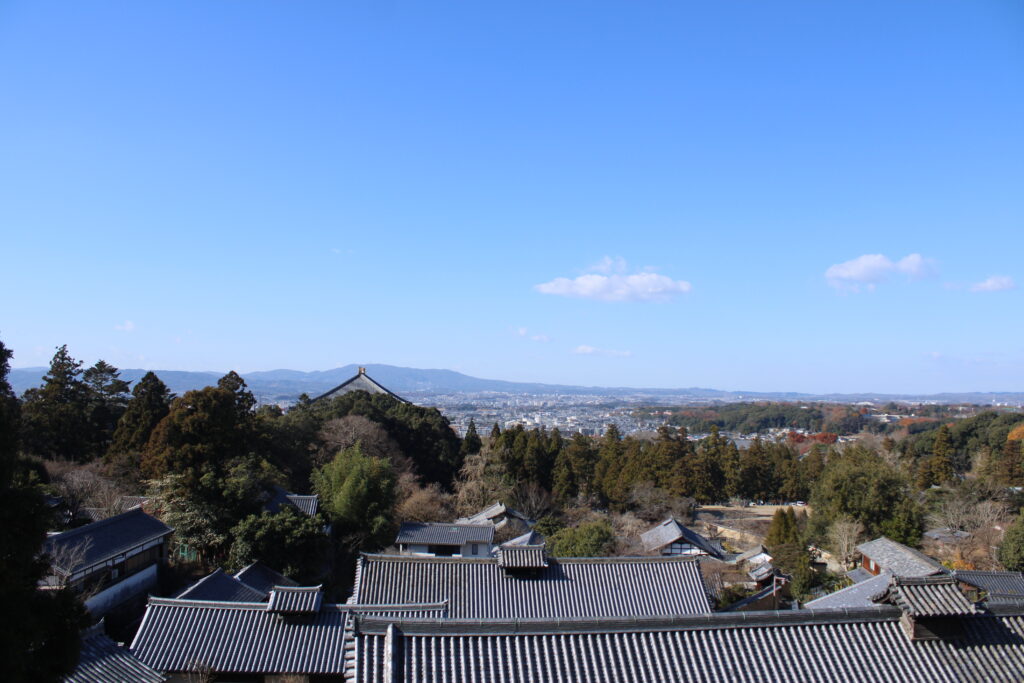
Hokkedō (Sangatsudō)
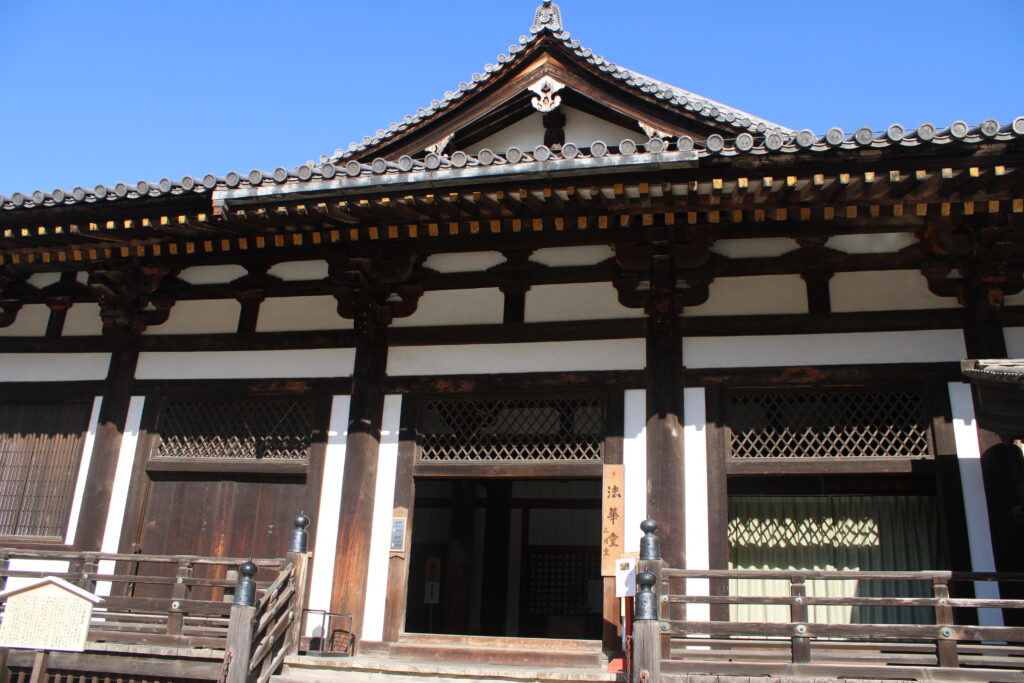
According to the Tōdaiji Yōroku, it is believed that Hokkedō was established between 733 and 747, making it the oldest building at Tōdai-ji. The hall was originally known as “Kensaku-dō” because it enshrines the Fukūkensaku Kannon, a manifestation of Kannon. However, because the Hokkekaï , a Buddhist ceremony, was held every March, it later became known as Hokkedō.
The hall consists of two parts: the main hall at the back (left, or north side) and the offering hall at the front (right, or south side). Initially, the structure was designed as a twin-hall building, but the current offering hall was newly built by Chōgen in 1199.
Inside the Hokkedō, you can see a total of 10 Buddhist statues, including the main deity, the Fukūkensaku Kannon. These statues, all from the Nara period and designated as National Treasures, stand closely together in the relatively small space. The room itself is dimly lit, creating a mysterious and spiritual atmosphere.
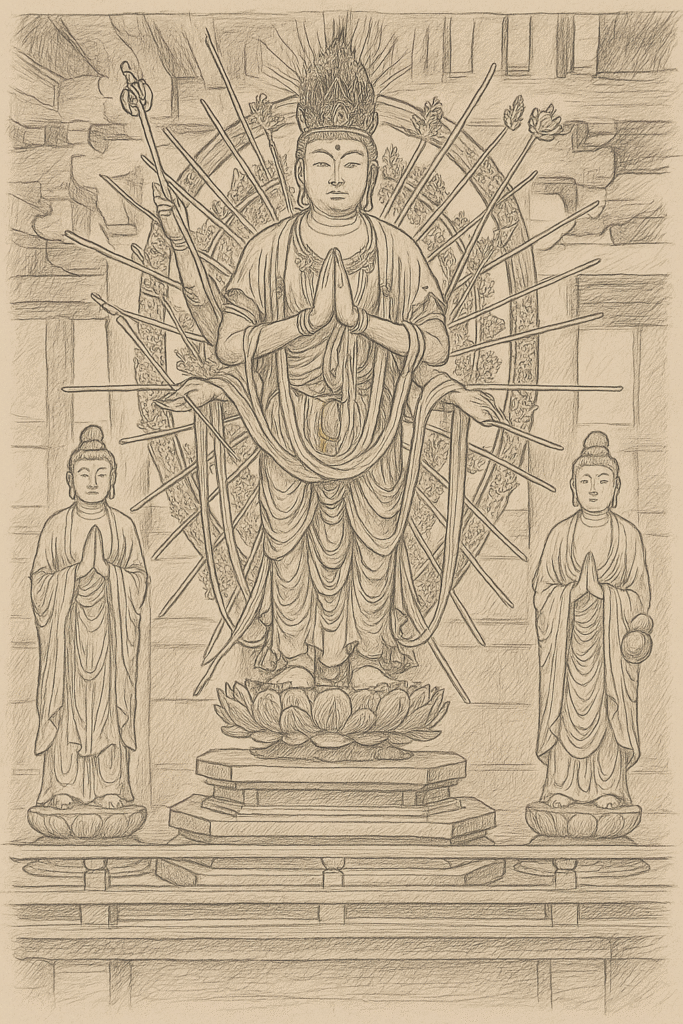
Among these statues, there is the towering Fukūkensaku Kannon, who appears to be reaching out to save all suffering beings, the Kongōrikishi statues with fierce, angry expressions, and the Shitennō (Four Heavenly Kings) statues, each striking a unique pose with varied expressions to protect the Buddha’s realm. These works are masterpieces of Tenpyō sculpture.
I spent some time admiring these incredible statues, but eventually, I had to leave. In Hokkedō, I experienced a unique and mysterious feeling, as if I had witnessed a great spiritual presence rather than something material.
Conclusion
That day, I started at Kōfuku-ji and was able to explore the vast grounds of Tōdai-ji.
At Tōdai-ji, I was truly overwhelmed by the power and scale of the Kongōrikishi statues at the South Gate and the Great Buddha. Compared to the temples in Kamakura, which I usually visit, I could really feel the grandeur and magnificence of Tōdai-ji.
Historically, as criticism grew regarding the corruption of established Buddhism in the Nara area, which had become closely tied to political power, the new Kamakura Buddhism emerged. I wonder if this is something that has continued into modern times as well.
That said, both are invaluable in understanding Japan’s history. There’s no need to compare them in terms of superiority. It’s enough to appreciate each period and its historical context.
Now, leaving the Hokkedō at Tōdai-ji, I headed straight south, where I could visit Kasuga Taisha Shrine. Yes, my exploration for the day was far from over. Though I was starting to feel a bit tired, I decided to press on to the next destination.
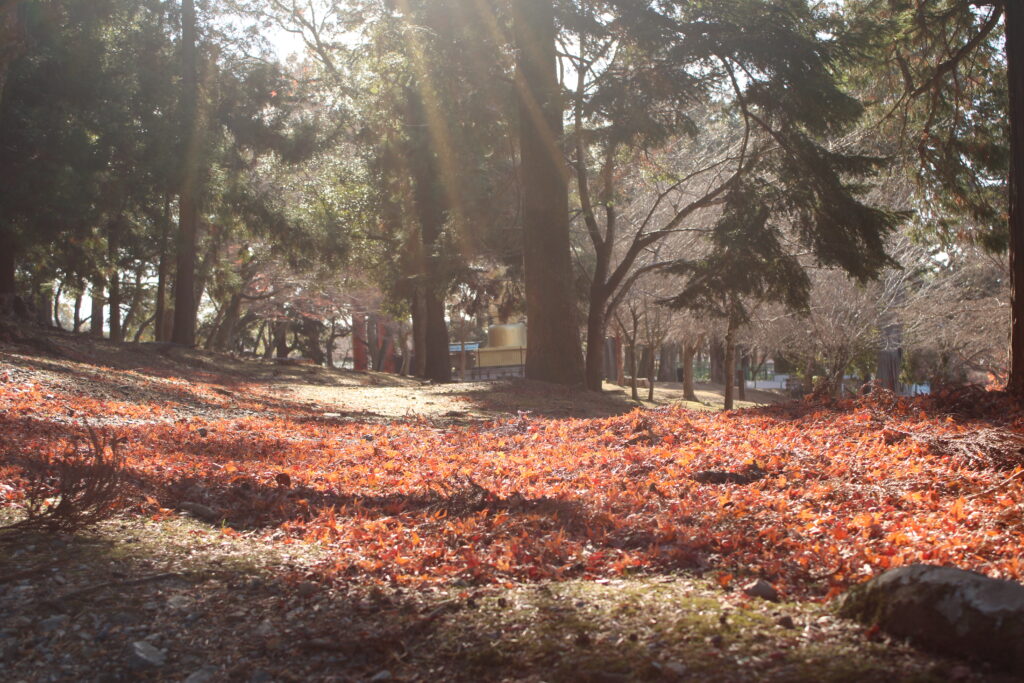
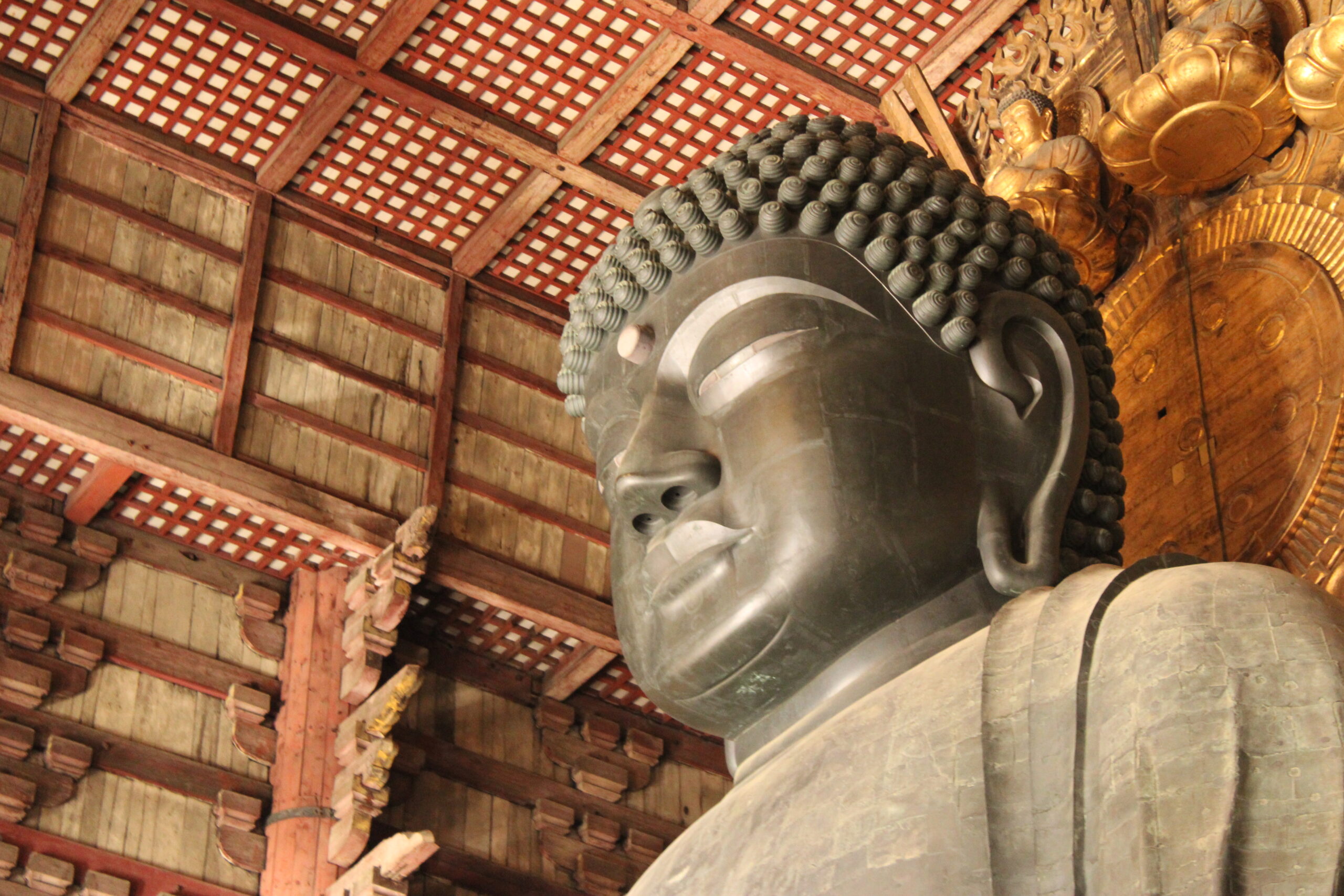


コメント